Begonia Mason: features of the species, rules of care and reproduction
Mason's begonia is one of the favorite plants of flower growers. With proper care, it will grow and develop rapidly, giving positive emotions to you and your guests.
Content:
- Description of Mason's begonia
- Caring for the plant at home
- Reproduction methods
- Diseases that can overtake a flower
Description of Mason's begonia
Mason's begonia is easily recognizable among nearly a thousand other types of begonias... Its leaves are decorated with an unusual pattern, each leaf is "painted" with a cross-shaped pattern of dark brown color.
Mason's begonia will add zest to any flower arrangement.
Almost all begonias are native to tropical regions. If the climate is cold, then begonias can be to breed at home or in a flower bedx. For the first time, Mason's begonia was discovered in New Guinea, after which it quickly found amateurs all over the world.
The maximum height of Mason's begonia is 20-30 cm.
It is of great value because of its leaves:
- In the spring-summer period, small flowers of a pale green color appear on the plant.
- Each begonia leaf can grow up to 20 cm in length, with a range of colors ranging from yellow to green. The older the plant, the more its leaves acquire a silvery tint.
- The leaves are large, with a sharp end, cordate, have a warty surface.
- Nondescript pale flowers are collected in a panicle inflorescence and rise high above the leaves, but do not carry decorative value.
Due to its tropical origin, Mason's begonia is difficult to tolerate the cold winter, therefore it needs ensure adequate temperature and solar conditions... The plant needs humid air all year round.
Do not be alarmed if in the winter the begonia began to dry out, most likely it went into hibernation. At this time, she needs to ensure peace and limit watering and spraying, it is advisable to cover the plant with a transparent cover. After 2 weeks, a new period will begin and fresh sprouts will appear.
To keep the leaves bright and the pattern even more pronounced, it is recommended to use fluorescent lamps in insufficient sunlight.
Plant care at home
Since the plant came to us from tropical countries, it means that she needs to provide appropriate care:
- The plant loves bright, diffused light, but this does not mean that it can be exposed to direct sunlight.
- The ideal, albeit artificial, lighting is provided by fluorescent lamps.
- Watering must be ensured plentiful, but care must be taken to ensure that the soil has time to dry out by a few centimeters.
- Water should not get on the leaves, this can lead to the formation of powdery mildew and decay.
- Air humidity must be kept high.
There are two ways to do this:
- Use a room humidifier.
- Place the pot on damp pebbles.
The plant must be protected from drafts. The most acceptable temperature for Mason's begonias is 18-25 ° C. If the air temperature drops below, then there is a risk of partial death of the plant.
It is important to take care of flower feeding... The mineral complex is well suited for indoor plants; you can feed the plant once a month throughout the year.Fertilizer is applied after watering to avoid root burns. If the begonia has entered a state of dormancy, then it is forbidden to feed the plant.
You can start propagating Mason's begonia from the very beginning of summer.
Reproduction methods
Mason's begonia does not produce seeds, so it can only be propagated in two vegetative ways.
In the first case directly share the tuberb, in the second, reproduction occurs with the help of leaves:
- It is necessary to select several tubers about 6-7 cm long, buds must be present in each area.
- It is recommended to sprinkle the cut site with crushed ash, and then place it in moist soil.
- Until the plant is completely rooted, the soil can be covered with plastic wrap and placed in a bright place.
- After the seedlings take root and the first leaves begin to appear, the film can be removed and the young plants placed in separate pots.
- When separating a begonia leaf, it is immediately laid on the soil and incisions are made along the "veins".
- To keep the leaf firmly pressed to the ground, you can pin it with a hairpin.
- A leaf with a petiole can even be buried in the substrate.
- The pot must be tightly closed with polyethylene and removed only after the plant has rooted and new shoots have formed.
Begonia leaves can also take root in water.
It is important to note that the air temperature during begonia breeding should be above room temperature. The substrate for begonia can be purchased ready-made, or you can make it yourself. To do this, you need to take in equal amounts of perlite, peat and sphagnum.
When buying ready-made, it is better to pay attention to the peat-based substrate. Before replanting the flower, the substrate must be immersed in water for several hours so that it is well saturated, and then the excess water must be drained. Mason's begonia will take root faster in wet soil than in wet soil.
Nature arranged that the nondescript flowers of Mason's begonia do not participate in reproduction, so they can be removed to make life easier for the plant.
Diseases that can overtake a flower
Mason's begonia can face several common problems, including:
- Dying off of leaves.
- Spots on the leaves.
- Powdery mildew.
- Root rot.
- Gray rot.
- Mealybug.
- Whitefly.
Now in detail about the problems of the plant:
- Drying of leaves is most often the result of a plant being in a low temperature, in winter it is below 15 ° C, in summer it is not lower than 18 ° C.
- Spots on the leaves appear due to dry air, therefore humidify the air in summer or spray.
- Powdery mildew is a white coating on leaves and stems, and it spreads in the form of spots or thin filaments. As soon as the first signs of the disease appear, the affected part of the plant must be removed, and the rest should be sprayed with a fungicide.
- With root rot, the roots turn red or brown, you may not immediately notice the disease and start its development. Gradually, the leaves begin to turn yellow and wither, then darken sharply and the plant dies. You can save a flower by eliminating the affected areas. To avoid contamination with this fungus, try not to overflow the soil.
- With gray rot, gray mold appears on the leaves, which easily falls off when the flower moves. If the plant is not cured in time, the leaves quickly darken and die off. The most common cause is excessively high air humidity and insufficient ventilation.
- The mealybug appears as fluffy formations in the leaf axils and on its underside. In another way, the hairy aphid is called. In order to prevent infection, it is important that the flower is kept clean and does not accumulate dust. If periodically wipe the leaves, you may never come across a mealybug.
- With whitefly, the leaves become stained and curled. Pests spread quickly in excessively warm air. When suspicious insects appear, you need to transfer the plant to another place, carefully examine and process it.
More information can be found in the video.



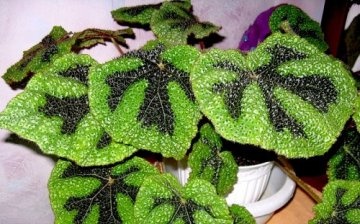

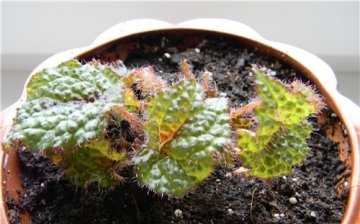
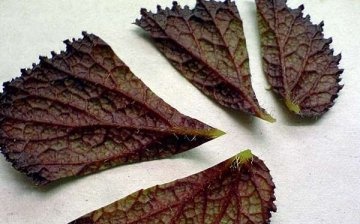
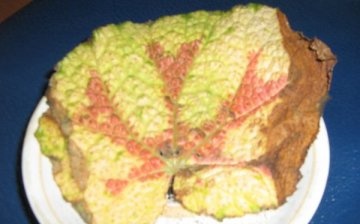





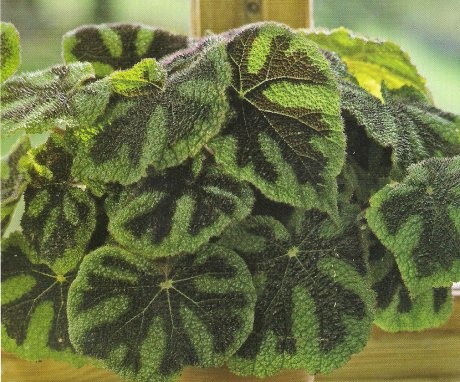
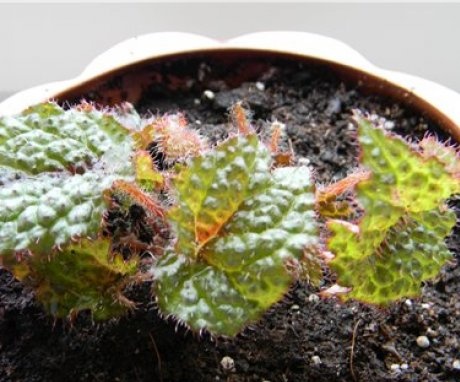
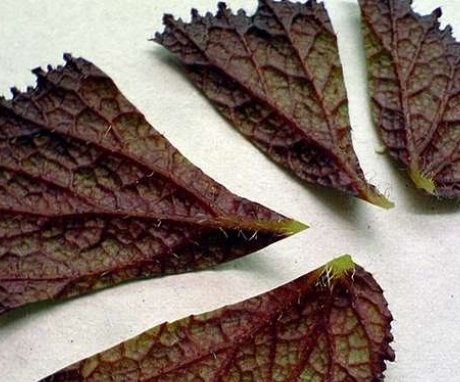
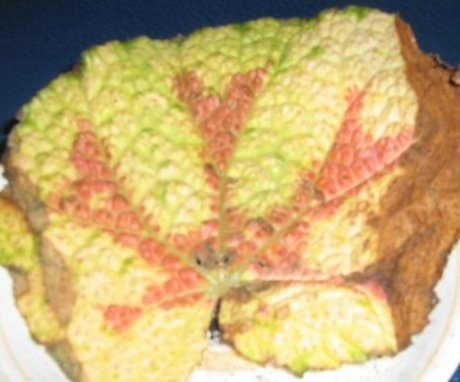
A very beautiful and relatively unpretentious plant. I think it is important to make sure that begonia bush, and for this it needs to be shaped by pinching the plant.